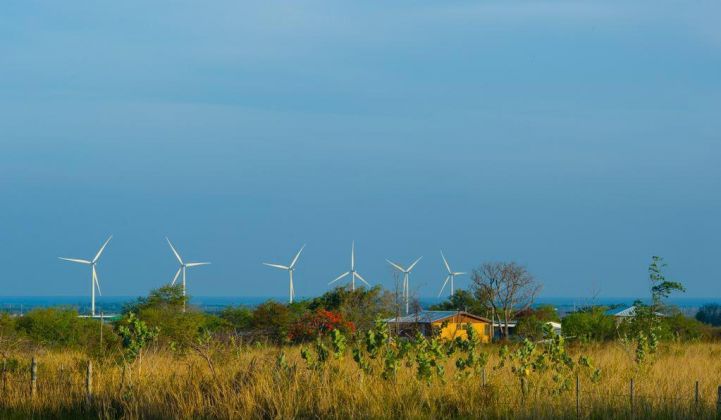Days after Hurricane Maria ravaged Puerto Rico last September, Pattern Energy found its 101-megawatt Santa Isabel wind farm had sustained little damage.
“Like everybody, we lost power,” said Senior Vice President of Operations Chris Shugart. But after communications were back up and running, Pattern was ready to operate. The company informed the island’s utility, the Puerto Rico Electric Power Authority (PREPA), it could go back to work within a week of Hurricane Maria.
But over seven months after the hurricane, Pattern’s generation remains 75 percent curtailed. PREPA's pace of permitting increases in generation is slower than Pattern's worst-case projection.
On May 17, the island’s electric authority reported that generation had reached over 95 percent. Over 94 percent of transmission centers were operating and nearly 99 percent of customers had power.
Shugart said the “vast majority” of clean energy on the island — two wind farms, several utility-scale solar plants and distributed rooftop solar installations — had little damage after the devastating storm. To his knowledge, most plants are still facing heavy curtailment. PREPA is also curtailing output from AES’ Illumina solar plant in Guyama, for instance.
“I think renewables are at the bottom of [PREPA’s] priority list,” said Shugart.
Hurricanes Maria and Irma created a mess for the energy system. The federal government has lobbed blame onto PREPA; Puerto Ricans have criticized D.C. and the mainland for colonial attitudes toward rebuilding; and clashes have dogged interactions between local regulators, Governor Ricardo Rosselló, PREPA and the federal board meant to oversee the island’s bankruptcy proceedings.
One thing seems to have united nearly everyone: renewables and distributed energy.
“I think every single party that’s expressed opinions about the future [in Puerto Rico] does see renewables being a bigger part of it,” said Shugart.
Pattern’s experience, however, worries him. Shugart understands why bringing clean energy generation back on the grid was not PREPA’s first priority; transmission and distribution suffered so much damage that clean energy wouldn’t have been deliverable.
PREPA's lack of communication is the problem, he said. It's a not a promising sign for reforming the island's electricity system.
“It has always been difficult to work with PREPA,” Alejandro Uriarte, president and CEO at local solar and battery installer New Energy, told GTM just after the hurricane. “They always say they’re friendly to renewables. But in practice, they are not.”
PREPA said AES’ Illumina plant was curtailed because transmission work isn't finished. The goal is 99 to 100 percent re-energization by May 31. The utility said ramping all generation, including renewables, remains a priority. Spokesperson Geraldo Quinones Lopez said the utility has had "constant communications" with energy providers.
"This source of generation has been ramping as transmission lines are restored," he said in an email. "Pattern Energy will continue to ramp in the system as transmission lines continue to become available. The [interconnection] in that area continues to be a focal point for PREPA, as there still continues to be restoration work surrounding that location."
But Shugart thinks PREPA isn't prioritizing renewables.
“I think [PREPA has] come into this with a bit of bias that renewables are not reliable,” he said.
In recent conversations with PREPA, Shugart emphasized modern grid controls: “They’ve got to get good at that.”
In its March fiscal plan, PREPA said 4 percent of generation capacity came from renewables compared to the national average of 15 percent.
Meanwhile, PREPA has other issues to deal with.
This month, lawmakers in the territory voted to privatize the utility. PREPA is also losing assistance from the Army Corps of Engineers to restore electric lines.
The Atlantic hurricane season starts June 1.
Puerto Rican officials said the government has stocked supplies across the island in preparation for future storms. Emergency generators were placed near critical facilities such as hospitals.
PREPA CEO Walter Higgins said the utility is readying itself with emergency drills. The utility is also working on contracts with three companies to replace Army Corps crews.
Separately, the energy commission this week released final regulations on microgrids to "enable customer choice and control over their electric service." It tasked PREPA with preparing a regulation within 120 days to govern interconnection.
However, as federal crews prepare to leave, Shugart said private companies may also depart. He said the utility needs to find ways to sign power purchase agreements and encourage more private investment in renewable energy projects.
“I think a lot of developers are going to stand on the sideline and not make a lot of investment until those things are clear,” said Shugart. “Pattern is not likely to make more investments here until those things are resolved.”




